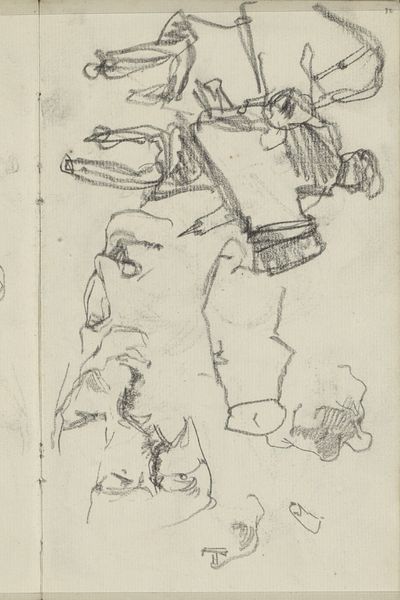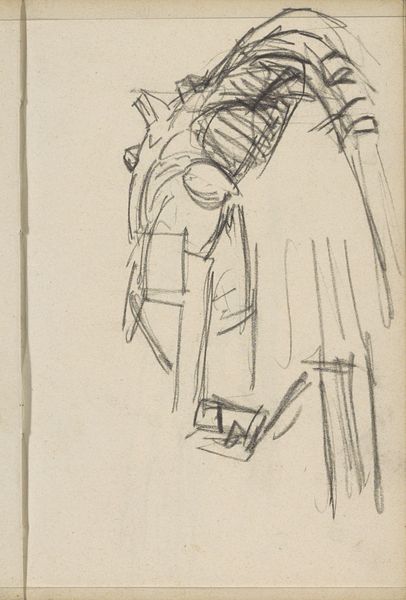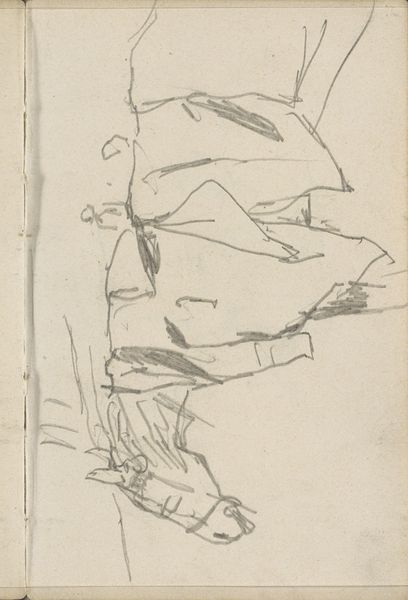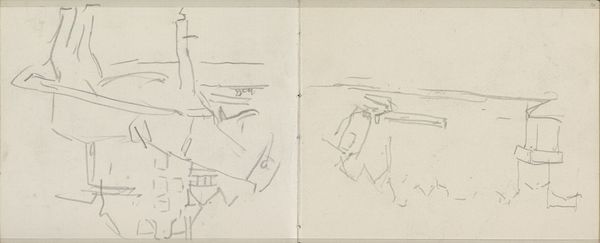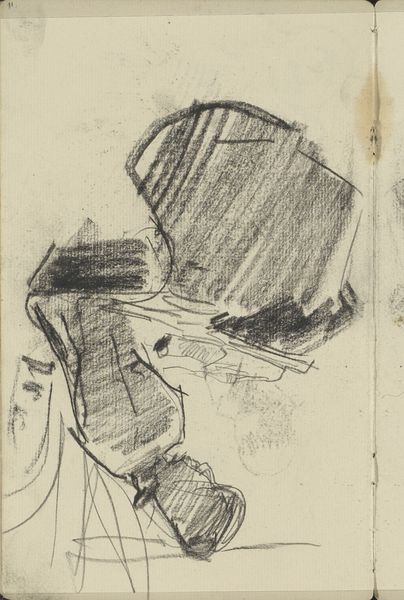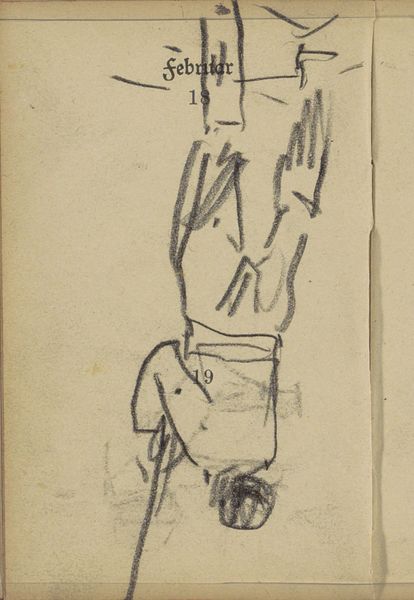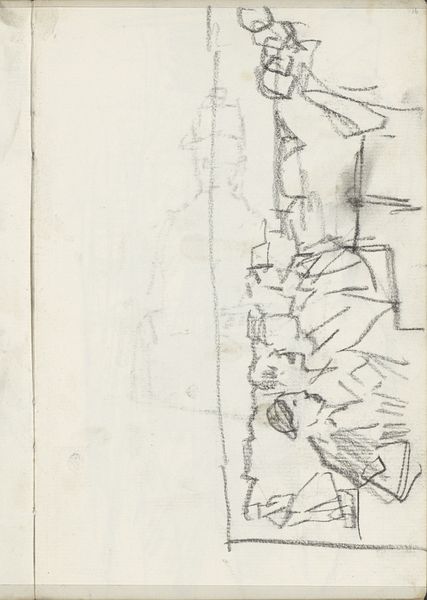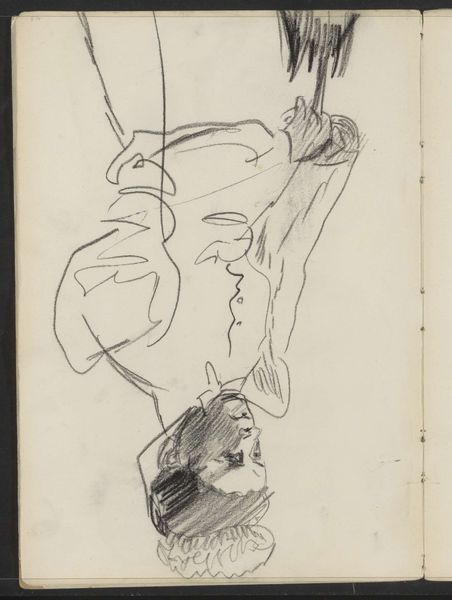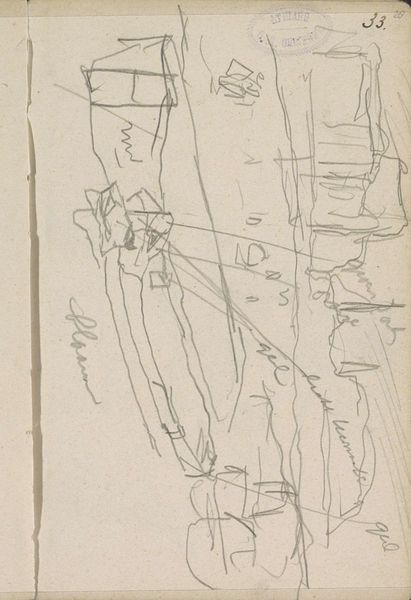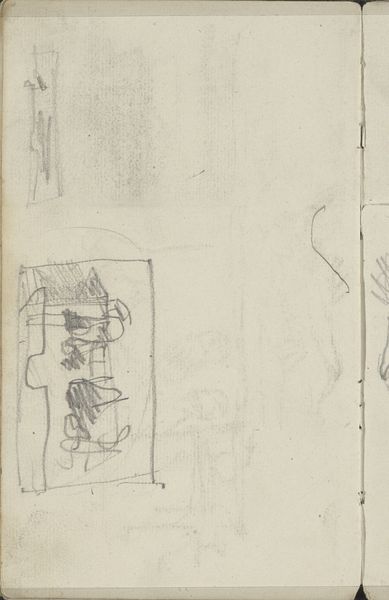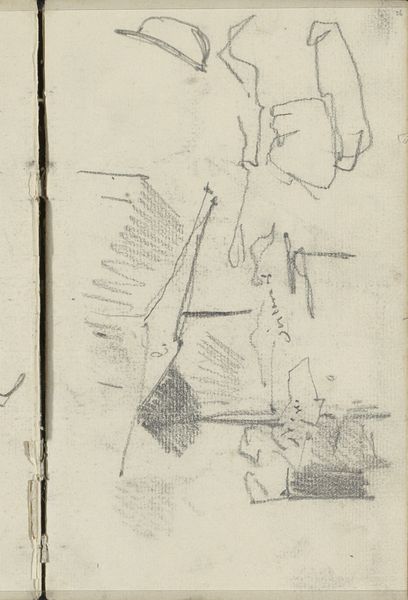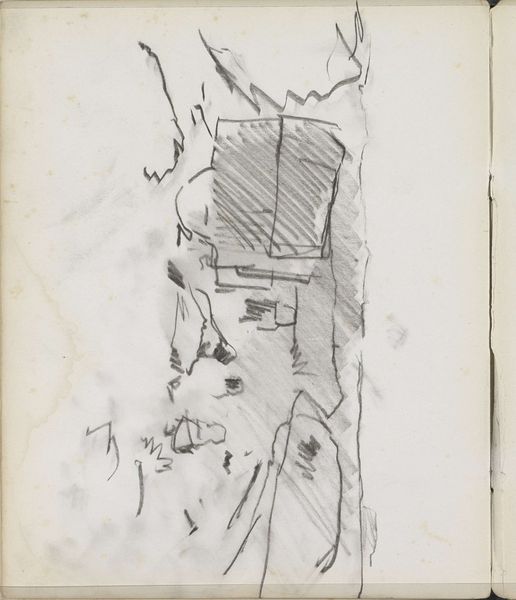
#
quirky sketch
#
sketch book
#
personal sketchbook
#
idea generation sketch
#
sketchwork
#
ink drawing experimentation
#
pen-ink sketch
#
horse
#
sketchbook drawing
#
storyboard and sketchbook work
#
sketchbook art
Copyright: Rijks Museum: Open Domain
Editor: So, this sketch is titled "Paardenkarren," which I believe translates to "Horse Carts," by George Hendrik Breitner, created sometime between 1884 and 1886. It's currently held at the Rijksmuseum. I’m immediately struck by its rawness. It feels very immediate and unfiltered, like we’re catching a glimpse into the artist’s thought process. What's your interpretation? Curator: Considering this through a materialist lens, I see a fascinating document of artistic labor. Look at the starkness of the materials: inexpensive paper, readily available ink. Breitner wasn't creating a finished product here; he was working through an idea. The quick, repetitive marks suggest a kind of visual note-taking. How might this raw process connect to the social context of the time? Editor: Well, Breitner was known for depicting everyday life in Amsterdam. Could this sketch be a study for a larger, more formal painting capturing the city's working class? Curator: Precisely. Consider the labor involved in both the subject and the making of the artwork. We see the depiction of working horses and carts, likely involved in transporting goods within the city. But also we must acknowledge the labor Breitner invested in creating the work. What can a simple sketch on inexpensive material tell us about consumption and commerce? Editor: Perhaps the disposability of the sketch itself mirrors the expendability of the working class it depicts? The ease and availability of the materials highlight the mass production of art materials. It sort of cheapens the art form, no? Curator: Not necessarily cheapens, but rather democratizes it. Materials dictate, or better influence, the artistic method and that's part of the conversation about the art making, the labor involved, and who gets to participate in that labour. What’s more interesting is the dialogue that can exist between “high” art and sketches like these that are a means to a finished, final, work. Editor: That makes sense. I never really thought about how much the materials themselves can inform our understanding of a piece and its context. Thanks! Curator: Indeed! The humblest sketch can reveal complex social and economic dynamics when viewed through a materialist lens.
Comments
No comments
Be the first to comment and join the conversation on the ultimate creative platform.
